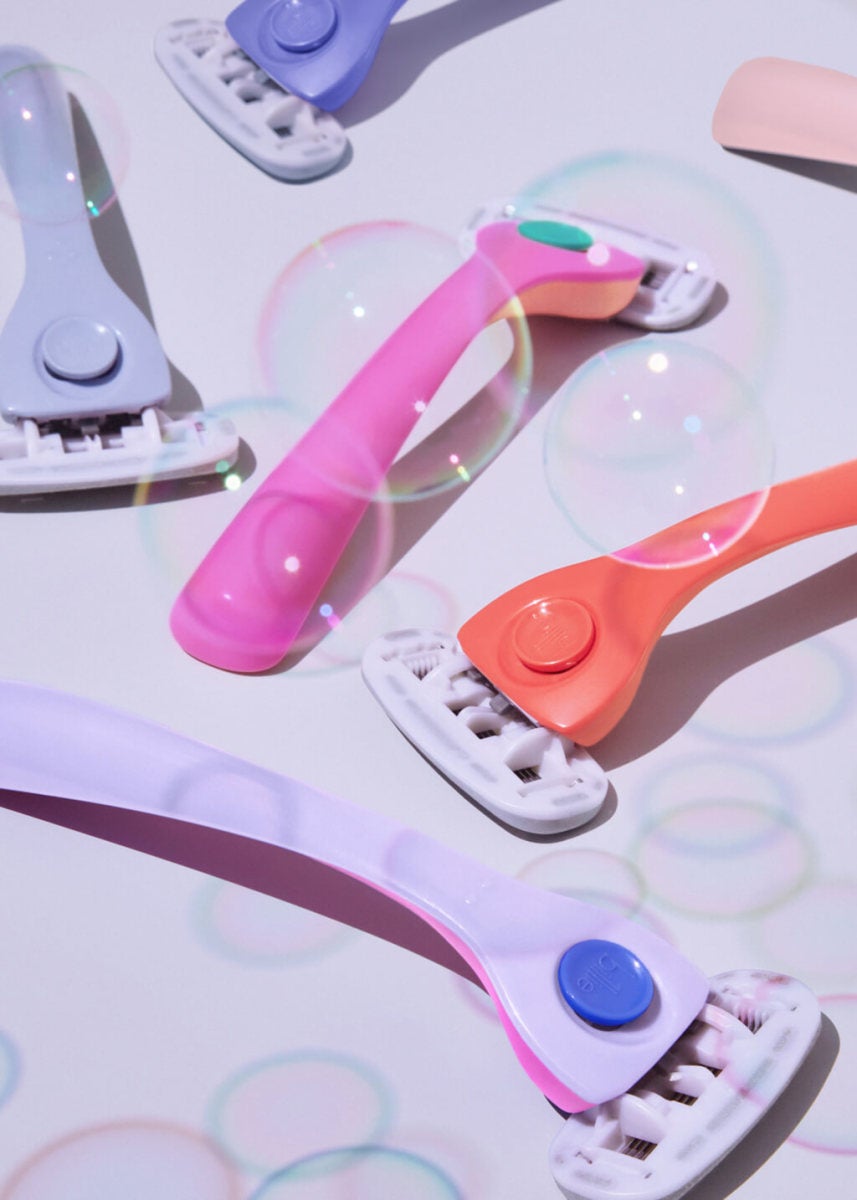Before Billie co-founder Georgina Gooley launched the “internet’s favorite razor” brand, she was one of many women struggling to find a razor that would get the job done right — sans pink tax, which typically marks products made for women up by 7% on average.
Gooley was tired of using razors marketed to men that didn’t address women’s unique shaving needs — removing hair from the legs versus the face, for instance — so she began to wonder what a razor brand created specifically for women would look like.
“I realized the category was very male-dominated,” Gooley says. “So whether it was the legacy brand that had been around forever or the newcomers at the time, the other startups, they were all very centered around giving men a better or more affordable shaving experience. No one was really focusing on women’s shaving experience.”
On a mission to stop women from being an “afterthought” when it came to shaving products, Gooley and her co-founder Jason Bravman launched Billie in 2017.
Related: This Co-Founder Was Kicked Out of Retailers for Pitching a ‘Taboo’ Beauty Product
“I wanted to come in and be a proud women’s brand and champion womankind,” Gooley says.
Founded on the belief that women should have an affordable razor designed with their needs in mind and be empowered to decide if they want to remove their body hair at all, Billie garnered widespread support and saw quick viral success.
The company, which was acquired by Edgewell Personal Care Company for $310 million in 2021, celebrated its fifth anniversary in November 2022. Today, Billie is a full-fledged body-care brand with more than 10 best-selling products across its categories.
Entrepreneur sat down with Gooley to learn more about Billie’s rise to internet stardom and how it’s fueling the body-hair acceptance movement today.
“We felt there was an opportunity to come in with a product specifically designed for the way women shave.”
It was the start of the 20th century when brands began targeting American women with hair removal campaigns. In 1904, Gillette patented its first safety razor, which made it easier for men to shave at home; soon, in a bid to expand their market, safety razor manufacturers spread the idea that body hair on women was “inherently masculine, “indelicate” and “unhygienic,” per The Smithsonian.
By 1915, Gillette launched the first razor marketed specifically for women — the Milady Decollete. But it was the beginning of a 100-year-plus history of brands selling razors to women without necessarily tailoring them to meet their needs, all while charging a premium and pushing the agenda that shaving wasn’t a choice, but a requirement when it came to personal grooming.
“We felt there was an opportunity to come in with a product specifically designed for the way women shave, [to] create a brand that would speak to them,” Gooley explains.
Gooley recognized the blank space in the market, but she faced some skepticism in those early days. “When we spoke to investors,” Gooley recalls, “particularly men, they sort of questioned it: ‘Well, I know men care about their razor, but do women care?'”
Gooley knew the answer was yes — and she came up with a product to put it to the test.
Billie’s razor has five nickel-free blades for a close, smooth shave that won’t irritate sensitive skin. Aloe moisturizer also surrounds the blades for extra comfort, and an ergonomic handle and magnetic holder make it easy to use and store (no slipping).
The brand’s subscription service also keeps the purchase process simple, allowing customers to choose an option that works best for their shaving frequency.

Image credit: Courtesy of Billie
Related: The Subscription Economy Is Growing. Can Your Company Adapt and Thrive?
“We wanted to be a brand all about choices, no pressure.”
In addition to its commitment to careful product design at an affordable price point, Billie strives to dismantle ideas about what women should or shouldn’t do with their body hair.
“For us, that meant never pressuring women to look a certain way or remove or feel like they need to remove their body hair,” Gooley explains. “It was always positioning shaving as a choice — we wanted to be a brand all about more choices, no pressure.”
When Billie launched in 2017, the brand’s dedication to design and body-hair positivity spoke to women all over the U.S. Just three days in, Billie’s razors had sold to customers in all 50 states, and six months later, the brand’s Project Body Hair campaign also made a splash.
The campaign celebrated body hair and emphasized that shaving was a choice. It wasn’t a one-off push either, Gooley says, but the way that they wanted to represent women — and still do. That viral campaign landed Billie billions of impressions and international attention.
“We had people literally from all around the world writing to us,” Gooley recalls, “saying, ‘I’ve never seen body hair [in a campaign]. I can’t believe that all these razor companies had been shaving shaved legs. I didn’t even know that I wasn’t seeing [body hair] until you put it out there.'”
“Even a small underdog brand can make a big impact and change a category that’s a century old.”
Billie’s rapid growth “was a really exciting wave to ride,” Gooley notes. It also meant trying to keep up with everything, including having enough inventory on hand to sustain that demand — “all amazing problems to have,” Gooley says.
Still, despite the strong support at launch, some skeptics, particularly social media trolls, were put off by Billie’s body-hair acceptance.
“I’m always pretty surprised when people have such strong opinions about how other people look,” Gooley says.
Fortunately, the brand didn’t have to intervene much in those conversations; its evangelists were already on it. “We had such support from women all over the world that anytime people would say ‘body hair is disgusting and women need to look a certain way,’ [supporters] would just come in and defend our position, which is the same as their position,” Gooley says.
Another interesting development came out of Billie’s push to normalize body hair too.
All of a sudden, legacy brands started to show body hair in their campaigns too, Gooley says: “That was probably the biggest win for us — because even a small underdog brand can make a big impact and change a category that’s a century old.”

Image credit: Courtesy of Billie
Related: Why an Entrepreneur’s Ability to Innovate Will Make (or Break) Future Success
“We want to celebrate the full spectrum of womankind…there are many beautiful ways that women can exist.”
The conversation around body hair has continued to move forward in the years since Billie’s rise to internet fame. “That’s the thing with representation,” Gooley says. “If you see it, it becomes more normalized, and it’s less of a surprise.”
“We always make sure that every photo shoot that we’re doing features women with and without body hair so that we’re normalizing both sides of the coin,” she adds.
Searches for “female body hair” increased by 319% since Billie launched five years ago, according to Google Trends. Additionally, Gooley points out that you can “walk by a billboard in Soho” and see women’s body hair on full display today — a sight that would’ve been far less likely just a few years back.
Through its campaigns, Billie continues to push for body-hair positivity, embracing the varied ways women choose to represent themselves and their contributions.
“We want to celebrate the full spectrum of womankind and show that we shouldn’t all be having to fit within [society’s] very specific box,” Gooley says. “Body hair was sort of the first foray into showing there are many beautiful ways that women can exist.”






